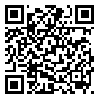Volume 29, Issue 4 (1-2021)
JGUMS 2021, 29(4): 86-101 |
Back to browse issues page
Download citation:
BibTeX | RIS | EndNote | Medlars | ProCite | Reference Manager | RefWorks
Send citation to:



BibTeX | RIS | EndNote | Medlars | ProCite | Reference Manager | RefWorks
Send citation to:
Mojani Qomi M S, Hatami M. Effects of Powder, Extracts, and Components of Ganoderma Lucidum in Treatment of Diabetes. JGUMS 2021; 29 (4) :86-101
URL: http://journal.gums.ac.ir/article-1-2187-en.html
URL: http://journal.gums.ac.ir/article-1-2187-en.html
1- Nutrition and Food Sciences Research Center, Islamic Azad University Tehran Medical Sciences, Tehran, Iran.
2- Department of Food Science and Technology, Faculty of Pharmacy, Islamic Azad University Tehran Medical Sciences, Tehran, Iran.
2- Department of Food Science and Technology, Faculty of Pharmacy, Islamic Azad University Tehran Medical Sciences, Tehran, Iran.
Abstract: (3941 Views)
Ganoderma lucidum is known in China and Japan as Ling-Zhi and Reishi. Due to medicinal properties and different nutritional compositions, ganoderma lucidum is currently used in food products. It contains essential fatty acids, essential amino acids, and a wide range of polysaccharides; all of which seem to be effective in lowering blood sugar level. This study aims to review the anti-diabetic and hypoglycemic effects of various powders, extracts, and components of ganoderma lucidum, by searching articles in Persian and English published from 2001 to 2020 in SID, MagIran, Scopus, PubMed, Web of Science and Google Scholar databases using the keywords: Active compounds, ganoderma lucidum, diabetes mellitus, hyperglycemia. The results showed that ganoderma lucidum uptake in most cases reduced fasting blood sugar, glycosylated hemoglobin, and insulin resistance in diabetic patients due to the its active compounds including the extracted polysaccharides, proteins and triterpenoids. Moreover, its antioxidant and anti-inflammatory properties seems to reduce the complications of diabetes. In conclusion, the consumption of ganoderma lucidum in diabetic patients can be effective in controlling and preventing the disease, although more studies are needed on its effective dose, side effects and toxicity in human samples.
Review Paper: Research |
Subject:
Special
Received: 2020/07/9 | Accepted: 2020/11/28 | Published: 2021/01/1
Received: 2020/07/9 | Accepted: 2020/11/28 | Published: 2021/01/1
| Rights and permissions | |
 |
This work is licensed under a Creative Commons Attribution-NonCommercial 4.0 International License. |









